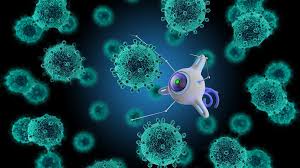
Breaking News
 US Oil Blockade of Venezuela Pushes Cuba Into Economic Collapse
US Oil Blockade of Venezuela Pushes Cuba Into Economic Collapse
 Gold and Silver Surge to New Record Highs, What's Going On?
Gold and Silver Surge to New Record Highs, What's Going On?
 Silver And Copper Are Both Flashing The Same Signal -- And That Is Setting The Stage...
Silver And Copper Are Both Flashing The Same Signal -- And That Is Setting The Stage...
 I Spoke At Turning Point USA - FULL SPEECH
I Spoke At Turning Point USA - FULL SPEECH
Top Tech News
 Perfect Aircrete, Kitchen Ingredients.
Perfect Aircrete, Kitchen Ingredients.
 Futuristic pixel-raising display lets you feel what's onscreen
Futuristic pixel-raising display lets you feel what's onscreen
 Cutting-Edge Facility Generates Pure Water and Hydrogen Fuel from Seawater for Mere Pennies
Cutting-Edge Facility Generates Pure Water and Hydrogen Fuel from Seawater for Mere Pennies
 This tiny dev board is packed with features for ambitious makers
This tiny dev board is packed with features for ambitious makers
 Scientists Discover Gel to Regrow Tooth Enamel
Scientists Discover Gel to Regrow Tooth Enamel
 Vitamin C and Dandelion Root Killing Cancer Cells -- as Former CDC Director Calls for COVID-19...
Vitamin C and Dandelion Root Killing Cancer Cells -- as Former CDC Director Calls for COVID-19...
 Galactic Brain: US firm plans space-based data centers, power grid to challenge China
Galactic Brain: US firm plans space-based data centers, power grid to challenge China
 A microbial cleanup for glyphosate just earned a patent. Here's why that matters
A microbial cleanup for glyphosate just earned a patent. Here's why that matters
 Japan Breaks Internet Speed Record with 5 Million Times Faster Data Transfer
Japan Breaks Internet Speed Record with 5 Million Times Faster Data Transfer
DNA Nanobots Used Bacteria's Chemical Communication and....

Bio-inspired Quorum Sensing in robots fabricated from DNA origami can communicate by transmitting and receiving diffusing chemical signals. The mechanism has features such as programmable response thresholds and quorum quenching, and is capable of being triggered by proximity of a specific target cell. Nanoscale robots with swarm intelligence could carry out tasks that have been so far unachievable in diverse fields such as industry, manufacturing and medicine.
Quorum Sensing (QS) is a well-studied example of collective behavior. See the 2013 TED Talk below on Bacterial quorum sensing chemical communication. This mechanism of cell-cell communication in bacteria utilizes secreted signal molecules to coordinate the behavior of the group. Linking signal concentration to local population density enables each single bacterium to measure population size. This ability to communicate both within and between species is critical for bacterial survival and interaction in natural habitats and has likely appeared early in evolution. Detection of a minimal threshold of signal molecules, termed autoinducers, triggers gene expression and subsequent behavior response. Using these signaling systems, bacteria synchronize particular behaviors on a population-wide scale and thus function as multicellular organisms.
QS-inspired approaches have been adopted in artificial systems, including mobile robots and wireless sensor networks, and naturally occurring genes have been harnessed in synthetic biology to implement QS at the cellular level.

 Advanced Propulsion Resources Part 1 of 2
Advanced Propulsion Resources Part 1 of 2

